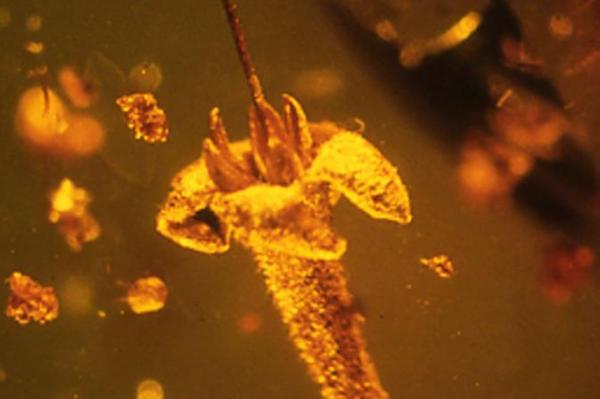
NEWARK, N.J., Feb. 15 (UPI) — Scientists have discovered a new species of flower encased in 15-million-year-old amber.
The two flower specimens, suspended in ancient sap, were among 500 amber fossils collected in 1986 in the Dominican Republic. Most of the fossils featured insects — the purview of entomologist George Poinar, a professor emeritus of integrative biology at Oregon State University.
Busy analyzing ants and beetles, Poinar only recently turned his attention to the flowers. They were unusually well preserved, but he failed to recognize them and decided to enlist the help of Lena Struwe, a professor of botany at Rutgers.
“These flowers looked like they had just fallen from a tree,” Poinar said in a press release. “I thought they might be Strychnos, and I sent them to Lena because I knew she was an expert in that genus.”
After studying the flowers, Struwe failed to find a match among the 200 species within the genus Strychnos. They were instead classified as a new species, Strychnos electri. “Elektron” is the Greek work for amber.
Though the well-preserved nature of the flowers simplified Struwe’s research, the work was still tedious. One by one, she compared high-definition imagery of the fossil specimens with physical samples of 200 Strychnos species collected over the last 200 years.
“The characters mostly used to identify species of Strychnos are flower morphology, and that’s what we luckily have for this fossil,” Struwe said. “I looked at each specimen of New World species, photographed and measured it, and compared it to the photo George sent me. I asked myself, ‘How do the hairs on the petals look ?’ ‘Where are the hairs situated?’ and so on.”
Struwe — whose new research is published in the Nature Plants — says the findings are proof that one doesn’t necessarily need to visit the remote jungle or dig deep into buried sediment deposits to find new species. There are plenty of unnamed species hiding in the storage rooms of museums and the backlogs of scientific collections.





